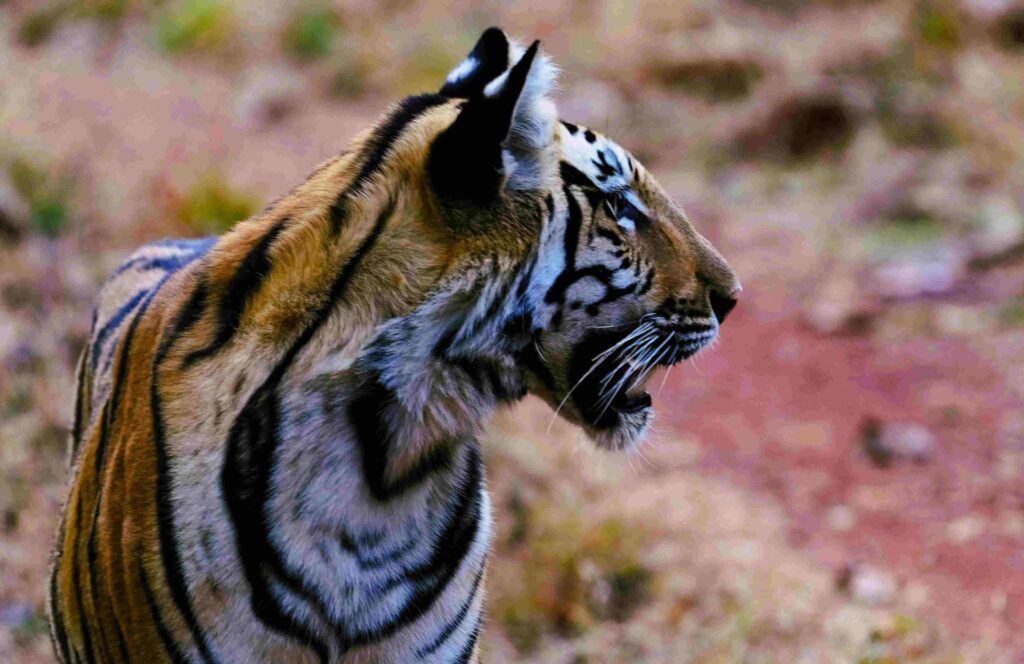
Tigers look alluring in their fabulous striped pelt marvellously coloured in shades of reddish-orange. Their sharp stare can send a shiver of terror into your body. However, their powerful presence is not all just brute ability to kill and fill their stomachs when hungry, but they are capable of a high ‘density’ of emotions with strong likes and dislikes says Dr Anuradha Reddy, Principal Scientist of CCMB – Centre for Cellular of Molecular Biology, a 47-year-old hi-tech research organisation in Hyderabad.

She narrated an incident about the translocation of five tigers to Panna Tiger Reserve, as the Tiger population was wiped out due to poaching and other factors. Tiger translocation began in 2009, with two female tigers from Kanha and Bandhavgarh Tiger Reserves and one male Tiger from Pench Tiger Reserve, all located in Madhya Pradesh. This initial group of Tigers laid the foundation for the successful revival of the park’s tiger population, with the first cubs born in the wild in 2010. Strangely one Tigress did not breed with the translocated male Tiger, instead she mated with another Tiger present in the adjoining landscape. This secret was revealed only by the DNA analysis from fecal matter and thereby proving as a tool-kit to uncover the mysteries of the jungles. This research also revealed that there is an uncanny behaviour trait where a female tiger may choose or reject an amorous male for reasons not easily understood as yet, explains Dr Anuradha. Over the years, the relocated tigers successfully adapted to their new environment and also thrived in the jungles of Panna. Today, Panna’s tiger population has steadily grown, with over 50 tigers reported in the region.
To commemorate the wildlife week celebrations across Hyderabad, the World-Wide Fund for Nature [WWF-India] had organised a slew of programmes across the city in the first week of October. One such talk on Tigers with a combo of offline and online PowerPoint presentation was organised at the American Corner on the campus of Francis College for Women, Begumpet. Speaking on the occasion Dr Anuradha enlightened the engrossed audience that Indian scientists have been at the forefront of tiger conservation, leveraging advanced DNA and Fecal matter analytical techniques to understand and protect the endangered species. These methods are non-invasive and provide crucial insights into tiger genetics, population health, behaviour, and habitat use, without physical contact with the ferocious wild animals.
One significant area of research is the use of DNA analysis to track Tiger populations. Researchers collect DNA from Tiger faeces, hair, nails or saliva found on prey remains. This genetic material is then analysed to identify individual Tigers, assess genetic diversity, and understand population structures. By comparing DNA samples over some time, scientists can monitor Tiger movement patterns, identify corridors between tiger habitats, and detect inbreeding risks in small or isolated populations. This information is critical for shaping conservation strategies, and ensuring that Tiger populations remain genetically healthy and robust.
Fecal matter excreted from the body through the bowels as poop and also known as Stool or Faeces or Scats may sound disgusting. But it is a crucial matter for analysis. It has also emerged as an influential tool in tiger research. Through the analysis of Tiger scat, scientists can gain insights into the diet, health, and reproductive status of tigers. Faeces contain not only undigested prey remains, which reveal what tigers are eating, but also hormones that can provide information about stress levels, reproductive cycles, and even pregnancy. This approach helps researchers understand how factors like habitat degradation, prey availability, or human activities are affecting Tiger well-being.
Inbreeding among wild Tiger populations has become a growing concern for conservationists, as it can lead to a loss of genetic diversity and increase the likelihood of genetic disorders. Indian scientists have focused on understanding inbreeding by analysing DNA from Tiger populations in isolated habitats, where limited gene flow may occur. By comparing genetic markers from different Tigers, researchers can detect signs of inbreeding, such as reduced genetic variation or the presence of harmful mutations. Studies in reserves like Ranthambhore have revealed that smaller populations face a higher risk of inbreeding due to habitat fragmentation, which limits the movement of tigers between different areas.

To counteract this, scientists are advocating for protecting and even creating wildlife corridors that connect isolated tiger reserves. These corridors would allow tigers to move freely between habitats, increasing gene flow and reducing the chances of inbreeding. In some cases, researchers have suggested translocating tigers from genetically diverse populations to smaller, isolated groups to introduce fresh genetic material. Continued monitoring of genetic diversity through DNA analysis remains essential to prevent inbreeding and ensure the long-term survival of wild Tigers in India.
With about 4000 tigers in the wild, India’s Tiger census use advanced techniques like DNA sampling and analysing “poop-profiles,” which are akin to human fingerprints in their uniqueness, to count tigers. This method helps accurately track individual tigers across national parks and wildlife sanctuaries, ensuring precise population monitoring. By combining traditional tracking with modern technology, such as genetic analysis, India’s tiger census provide valuable insights into Tiger ecology. These evolving methods have been critical in supporting tiger conservation efforts, shaping effective strategies, and contributing to the gradual recovery of the species in their natural habitats.



